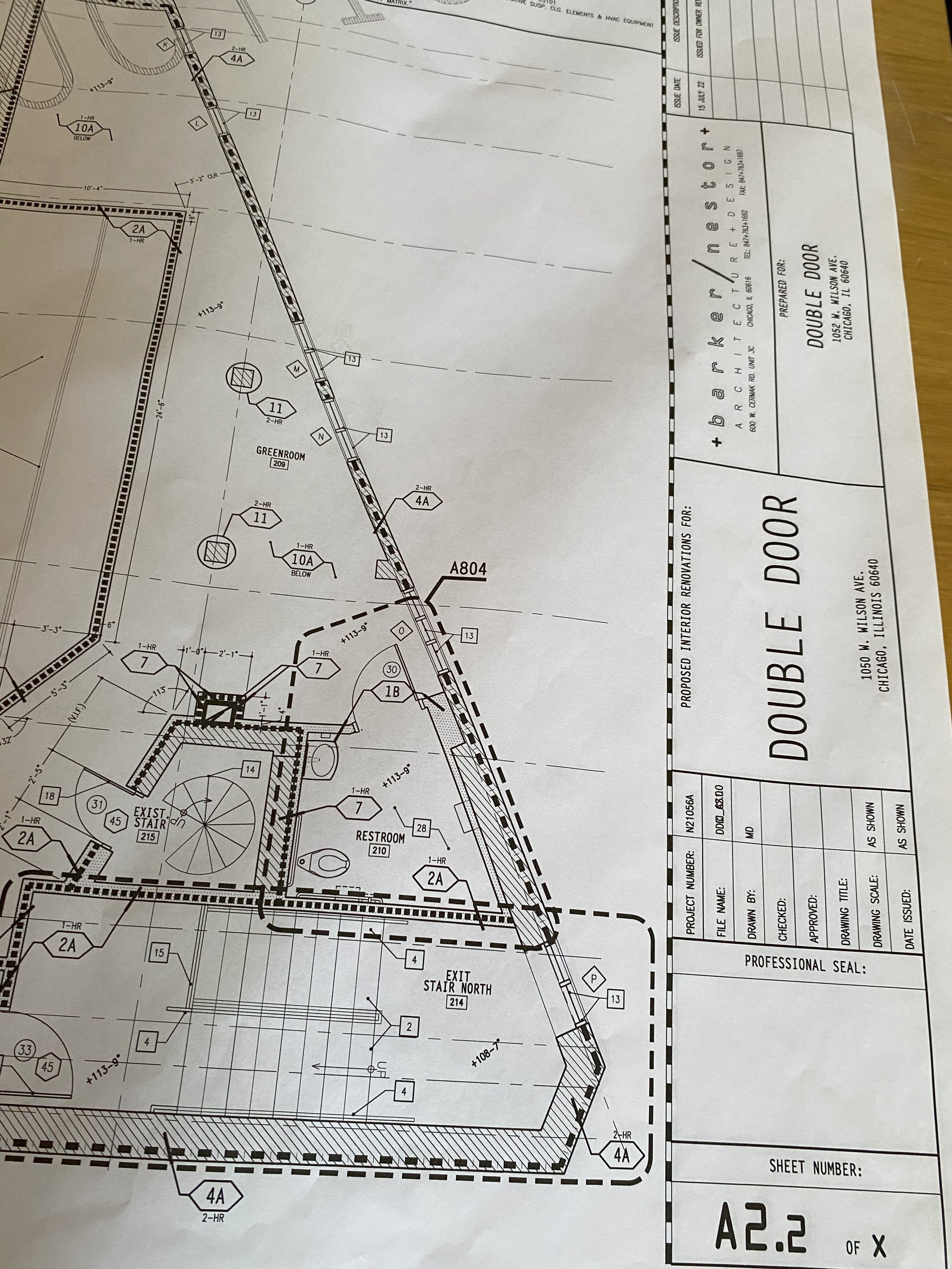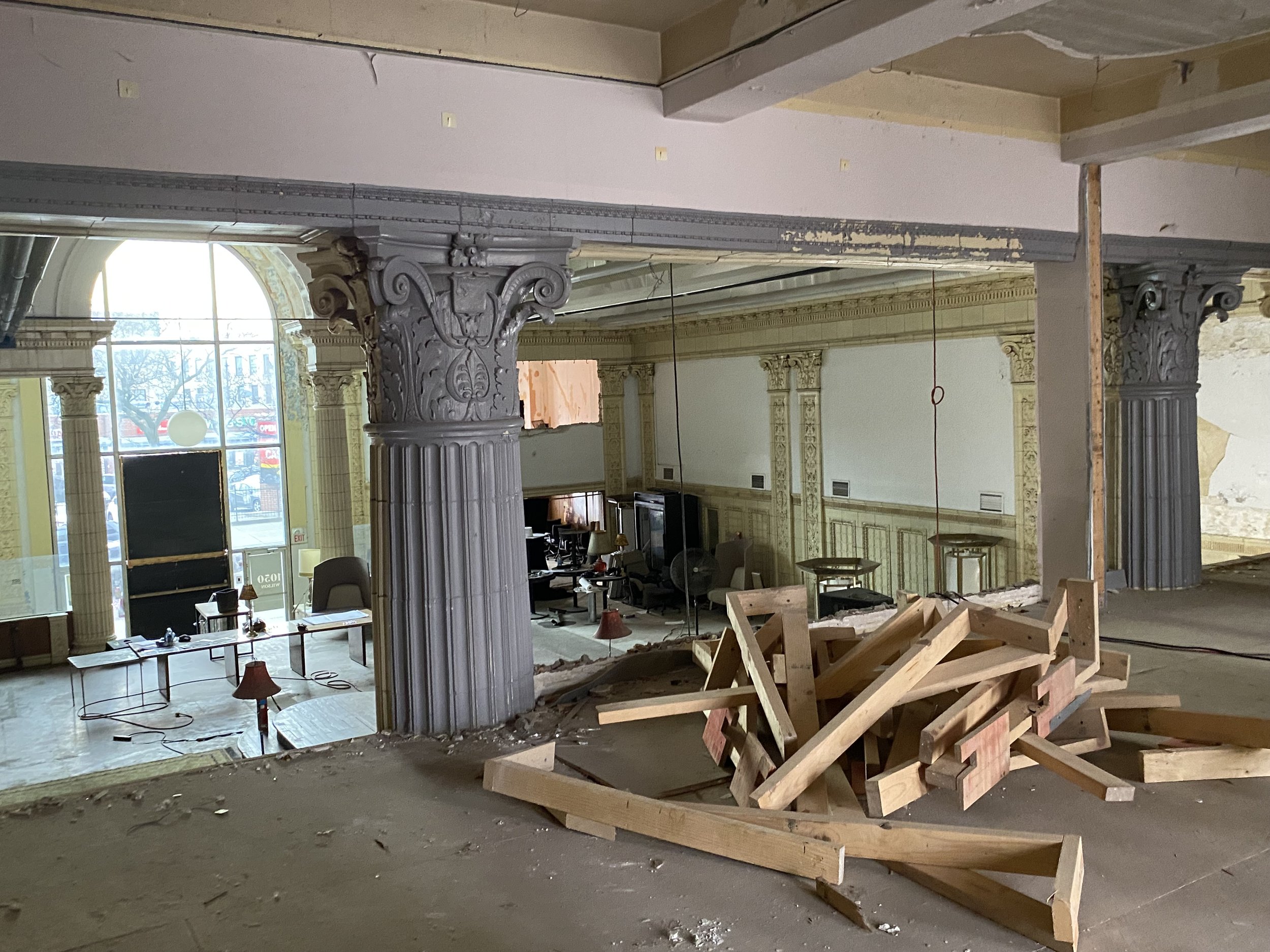By Lois Kimmelman, LEED AP
PC: Lois Kimmelman, LEED AP
Chicago’s legendary rock music hall Double Door is overcoming the typical odds faced by those looking to preserve the best of a historic building while revamping it with both modern and green features. To paraphrase George Harrison, it takes plenty of money, a whole lot of precious time, and much patience, to do it right.
PC: Lois Kimmelman, LEED AP
In 2017, when they realized they had to move out of their old space on the north side of the city, the owners of Double Door settled, after a long search, on a new location a few neighborhoods away, the Wilson Theater, built in 1909, solid and majestic, but vacant, leaky, and deteriorating. An exciting idea—returning an entertainment venue to its original use, i.e. entertainment! But actually, the Wilson Theater, part of the city’s Uptown Square Historic District, only served as a theater for a mere ten years. In 1919, for reasons as mysterious as the contents of the rusting vaults still standing in its back rooms, the building was turned into a bank and a bank it remained till 2011. As a bank it became much fancier than in its vaudeville days; customers were greeted inside by walls bedecked by terracotta cherubic figures.
PC: Lois Kimmelman, LEED AP
In 2021, Double Door took over the building, intent on beginning a gut rehab and filling the structure with music ASAP, both on the ground floor mainstage with a capacity of 750, plus a more intimate subterranean cabaret lounge. Their rhythm was interrupted, though, first by the pandemic, and then by a long wait for city permits and for city funding (a cool $5 million or so).
PC: Lois Kimmelman, LEED AP
Finally, progress on the renovation is charging ahead. Together with their architect, Barker Nestor, the owners are coming up with creative solutions to thorny issues. How to retain the grandeur and fine detail of the interior while installing new stairways, an elevator, modern bathrooms, a cutting-edge sound system, and updated, energy-efficient HVAC equipment? How to prevent seismic sound waves from damaging the building? Can a marquee be added without compromising its historic façade?
PC: Lois Kimmelman, LEED AP
To resolve the marquee question, for example, project designers and the Chicago Landmarks Commission spent months debating the pros and cons of hanging a prominent sign out front. At long last came a decision that pleased both parties: attach the Double Door sign (“Flaming Lips Saturday December 5!”, for instance), only to each end of the façade so that the entryway of the Classical Revival building will remain visible and intact.
To satisfy their twin missions of preservation and sustainability, the designers will save as many building elements as possible. The basement lounge will be housed in a huge, polished-up bank vault. The music hall décor will feature reclaimed and recycled pieces, like the set of vintage chandeliers recently procured at a garage sale. Energy and water savings will be prioritized. The bathrooms will have low-flow fixtures, and of course, LED lights will shine down on the performers.
Read more about historic buildings getting a green makeover on Lois Kimmelman’s website/blog, Historecycle. She promotes restoration and renovation, not demolition.






